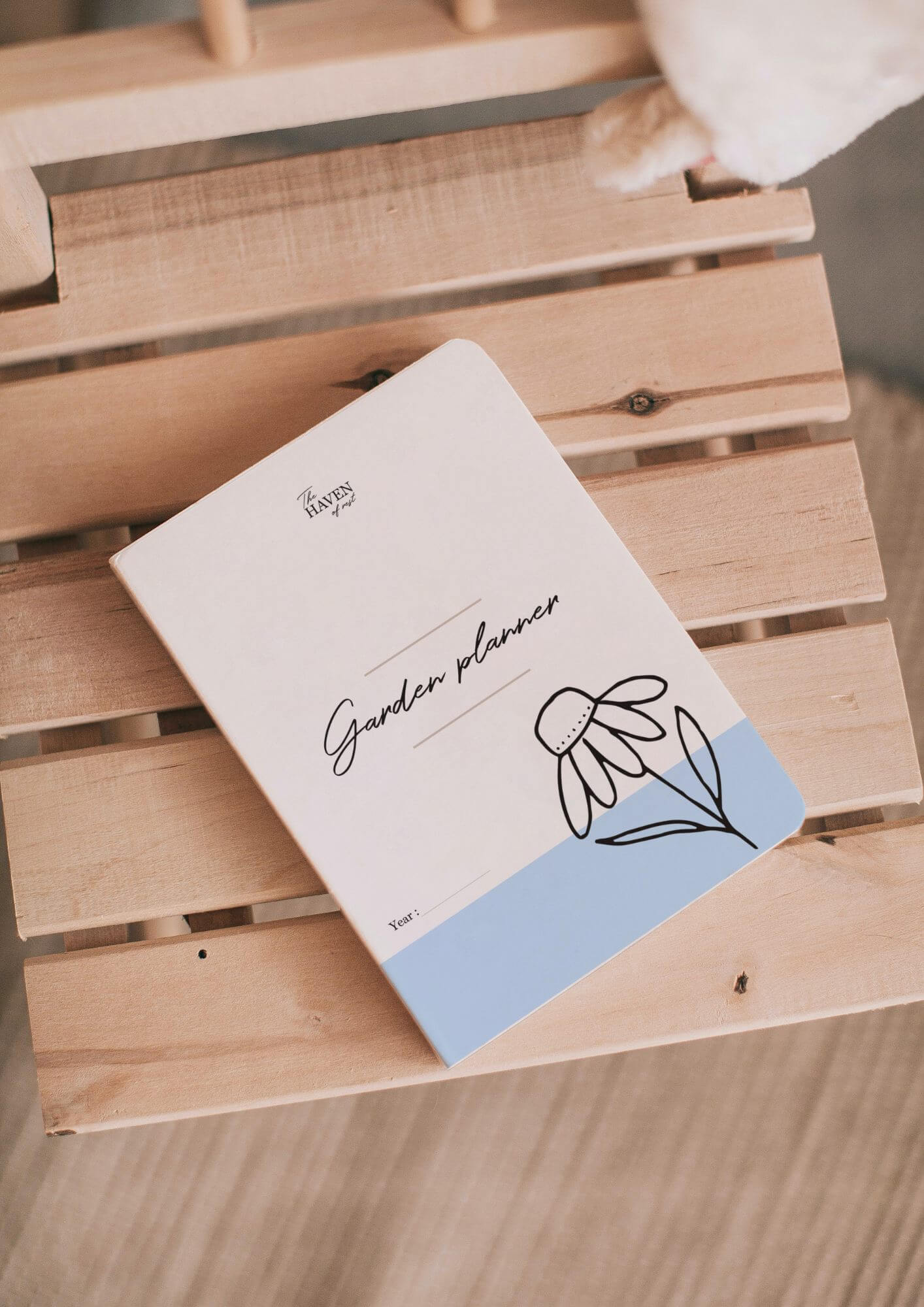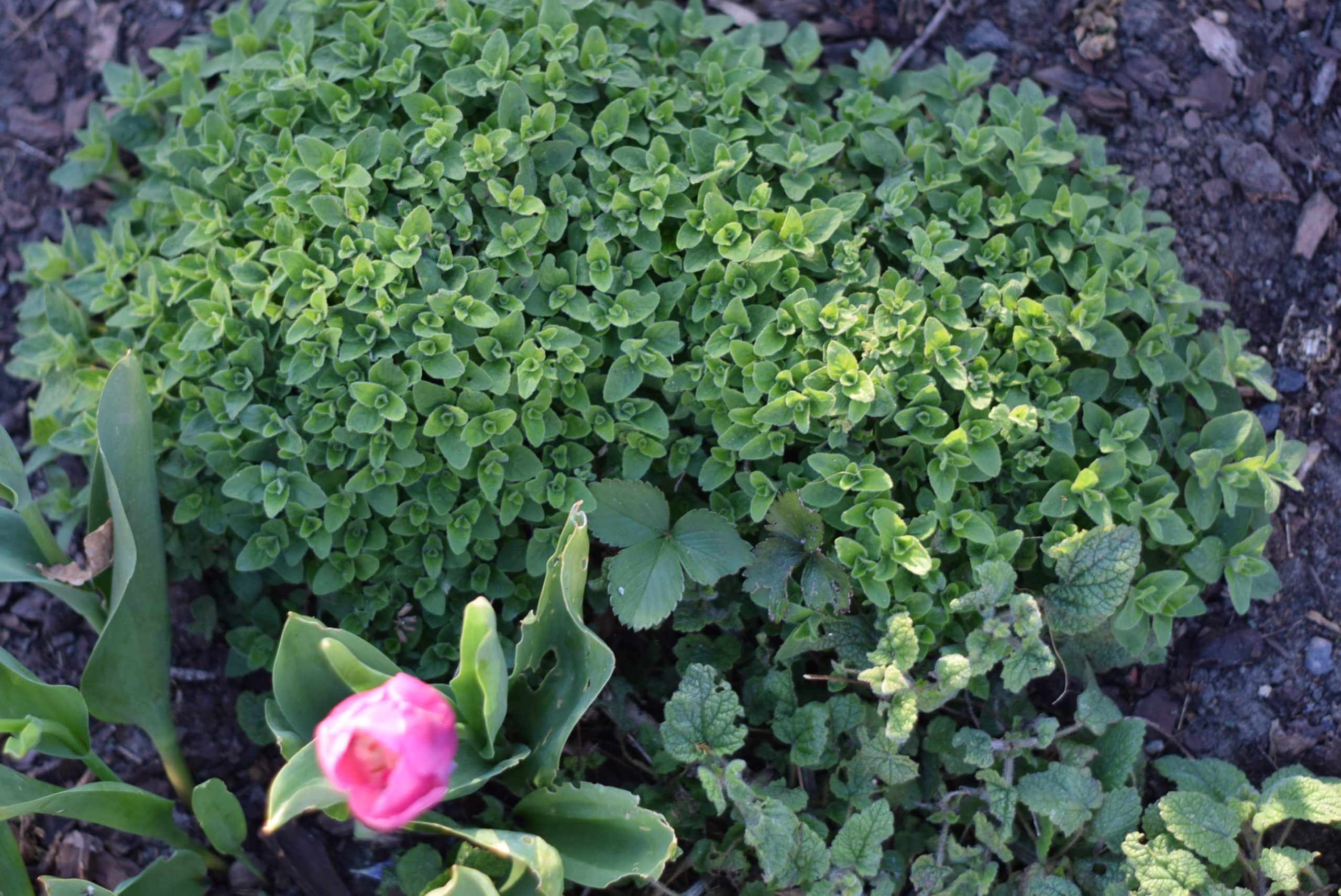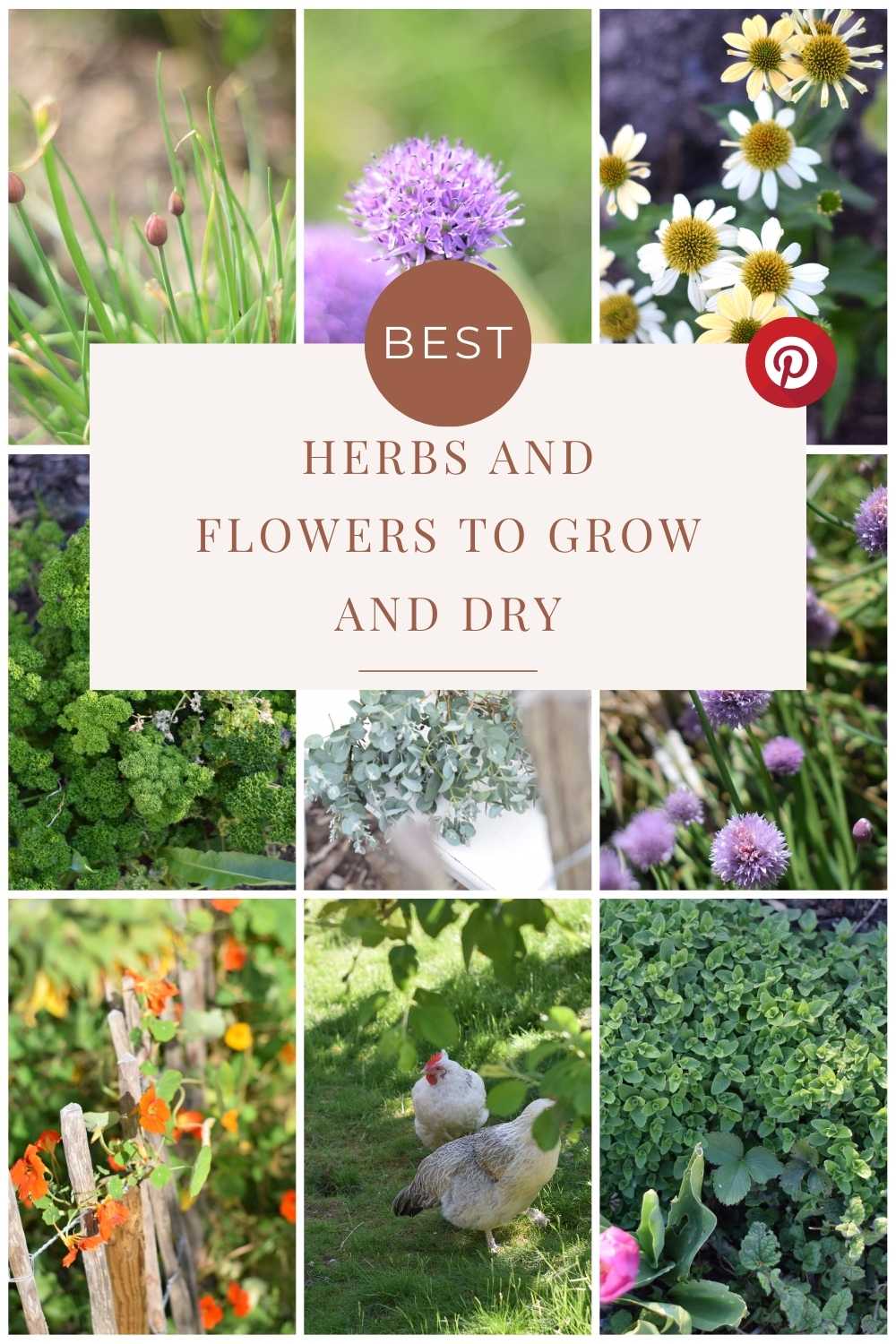Discover the best herbs and flowers to grow and dry for culinary and medicinal uses in your own garden. From perennial herbs to annual blooms, learn how to harvest and dry them for long-term storage. With tips on drying methods, storing, and preserving this comprehensive post will help you stock your pantry with the freshest and most flavorful herbs and flowers. Perfect for homemakers, who love to grow their own.
This post may contain affiliate links. That means I make a small commission for purchases made through these links, at no extra cost to you. All opinions are my own. You can read my full disclosure here.
Are you interested in adding more flavor to your culinary creations, creating your own herbal teas, or using natural remedies for minor ailments? Growing and drying your own herbs and flowers is a wonderful way to accomplish all of these goals.
Harvesting and preserving your own plants and herbs is satisfying and allows you to enjoy the unique flavors, scents, and medicinal properties of herbs and flowers that you can’t find in stores. Homegrown is just unbeatable.
In this blog post, we’ll explore the best herbs and flowers to grow and dry, as well as the tips and techniques for harvesting, drying, and storing them. Whether you have a full herb garden or just a few pots on your windowsill, you’ll discover how easy and rewarding it can be to grow and dry your own herbs and flowers.

Planning Your Garden for Herbs and Flowers
Choosing the Best Herbs and Flowers to Grow
Growing your own herbs and flowers is a rewarding experience that can provide a range of benefits, from adding fresh, healthy flavors to your meals to making your own herbal remedies. But with so many options available, it can be overwhelming to decide which herbs and flowers to grow in your garden. Which herbs are best to start with? If you’re a first-time gardener and/ or have limited space I’d suggest you start with just a few, easy-to-grow herbs.
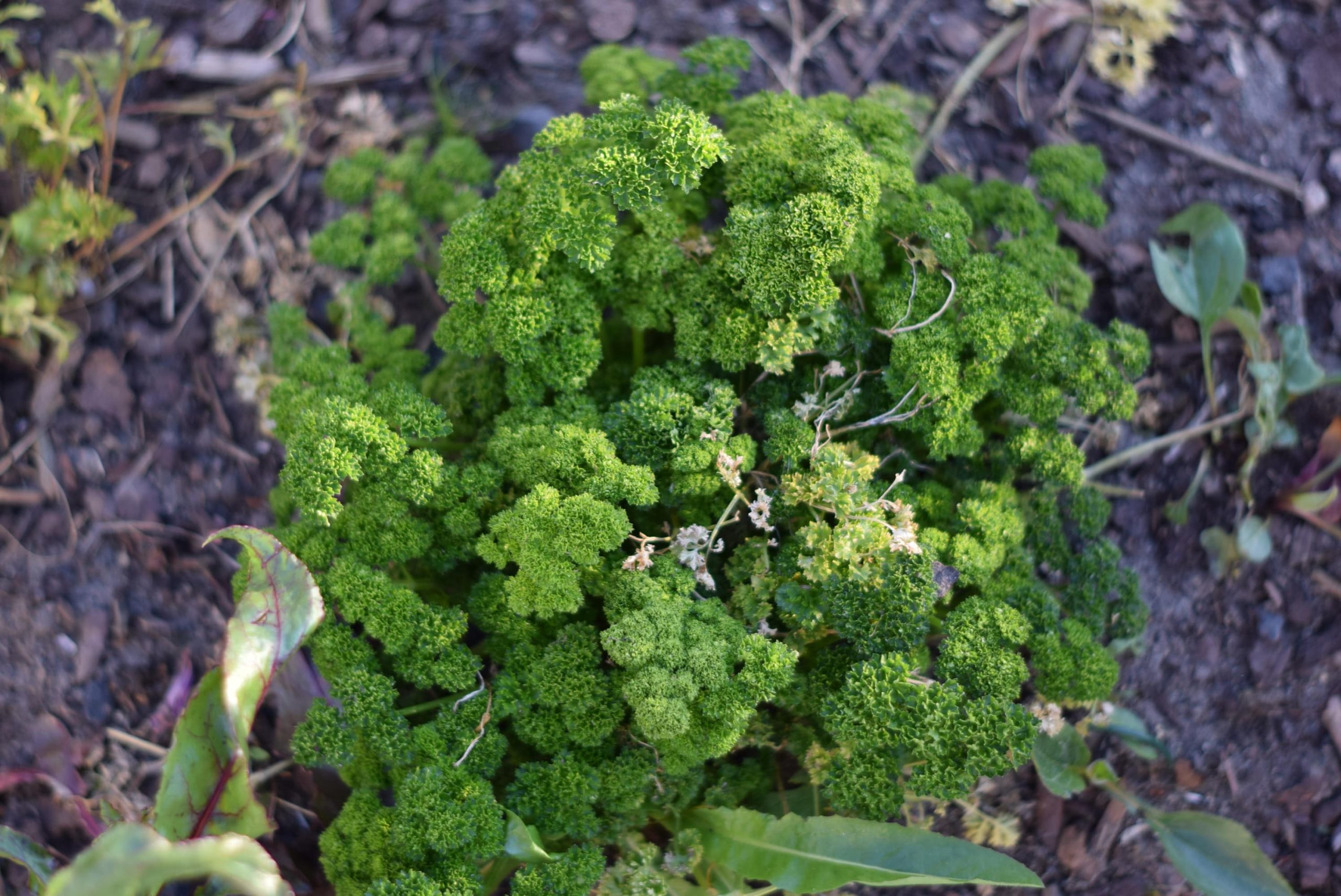
To get started, consider the types of herbs and flowers that are easiest to grow and dry, and that you’ll use most. Culinary herbs like basil, chive, and oregano are popular choices, as they can be used in a variety of dishes and are relatively easy to care for. You can grow them indoors, or, if you have room in your garden, grow them outdoors. They’ll do equally well in pots as in soil.
Perennial herbs like thyme, rosemary, sage, and lavender are also great options, as they can last for several years and provide a steady supply of leaves and flowers. Do bear in mind that some herbs, like thyme, have the tendency to grow BIG, and in full soil, their roots will spread. If you want to keep that under control, consider planting herbs like thyme in a large pot.
Additionally, you may want to consider growing herbs and flowers that are known for their flower heads, such as chamomile, calendula, and yarrow. These can be harvested and dried for use in teas, infused oils, and other natural remedies.
When choosing herbs and flowers, it’s important to select varieties that are well-suited to your region and growing conditions. Look for plants that thrive in your climate and soil type, and pay attention to factors like sun exposure and moisture requirements.
To make the most of your space and resources, you may also want to consider growing herbs and flowers that can serve multiple purposes. For example, lemon balm is a versatile herb that can be used in cooking, tea-making, and as a natural insect repellent. Lastly, consider the seeds’ origin. Are they organic, open-pollinated seeds? As you’ll be using these herbs for cooking and infusions this might be an important factor.
Preparing Your Garden for Growing and Drying Herbs and Flowers
Proper planning is key when it comes to growing and drying your own herbs and flowers. One of the first things you must consider is the ideal plant growth conditions. Different herbs and flowers have different requirements, but in general, herbs are pretty easy to grow. Some of the herbs I’ve tried to grow keep coming up in areas where I don’t even want them. Like that easy! :)
To prepare your garden, start by selecting an area with good drainage and rich soil. If you have heavy clay soil, add organic matter like compost or even sand to improve drainage. Consider planting your herbs and flowers in a dedicated herb garden or in flower beds. That way you have all your herbs together.
Spacing is also important for optimal growth. Be sure to leave enough room between plants to prevent overcrowding. Always keep in mind the size of the plant in a year or two.
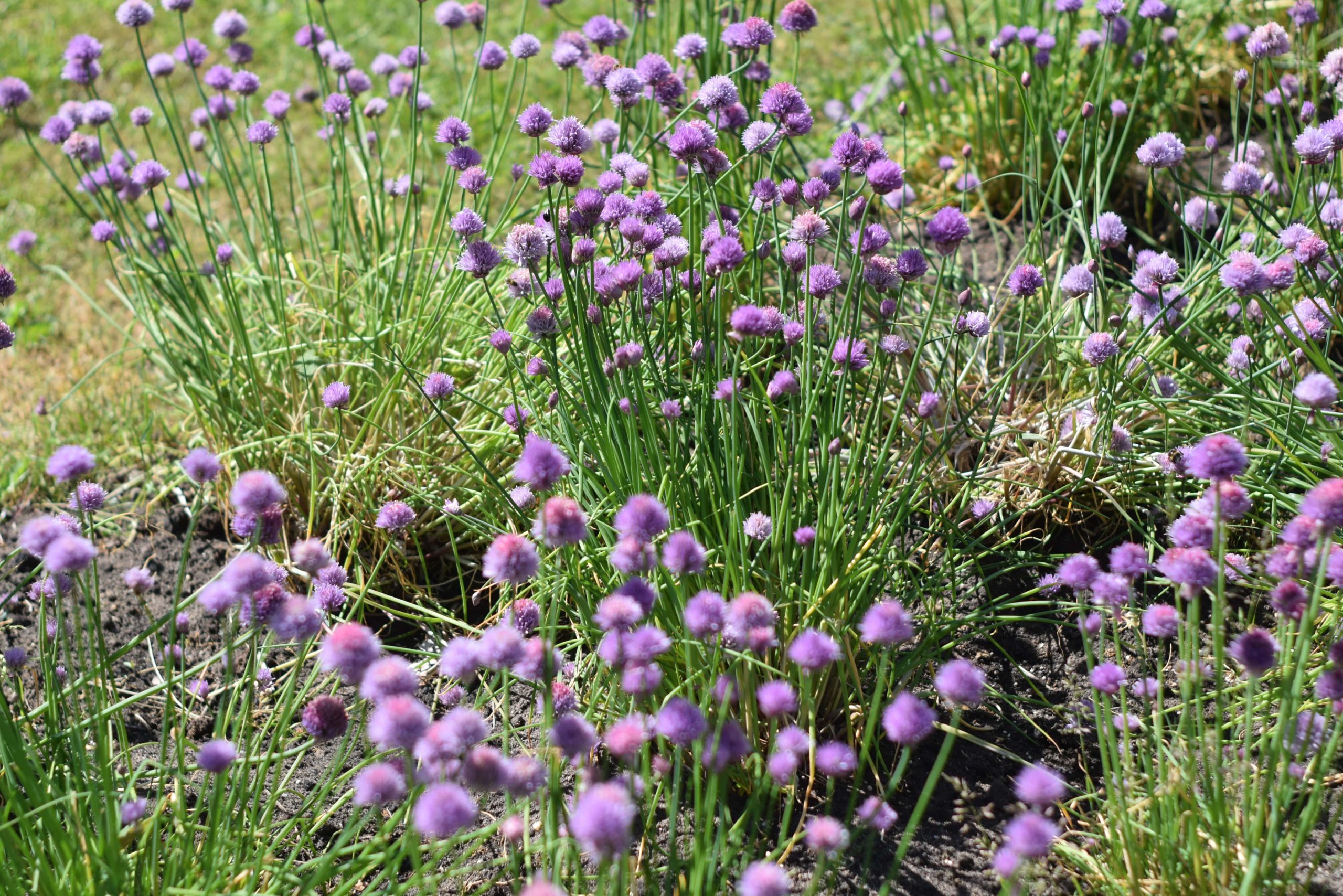
As you plant, keep in mind the growing season for each herb and flower, as some prefer to be planted in early spring while others do better in late spring or early summer. Though most plants bought in containers can be planted year-round as long as it’s not freezing. In case of drought, it might be better to wait a while before planting them. Always keep newly planted herbs well-watered.
Once your plants are in the ground, it’s important to maintain good air circulation around them. This can be achieved by spacing them appropriately and pruning any woody stems as necessary. Pruning will also stimulate plant growth. Most plants that produce (edible) flowers will make more flowers when you take those that have ceased blossoming.
When it’s time to start drying your herbs and flowers, there are several methods you can use.
Air drying is a popular and easy way to preserve your plants, using small bunches of fresh flowers or herbs tied together with a rubber band and hung upside down in a dry place with good air circulation. Another option is to use a food dehydrator to dry your plant material. Whatever method you choose, it’s important to dry your herbs and flowers in a cool, dark place to preserve their color and flavor.
Don’t forget you can use airtight containers, glass jars, or paper bags, to store your dried herbs and flowers. You can also make herbal tea blends or create flower arrangements with your dried plants.
It is a great way to add flavor to your meals and make your own teas, it’s also a good way to spend more time outdoors, while at the same time, you can reap some of the health and medicinal benefits of these plants.
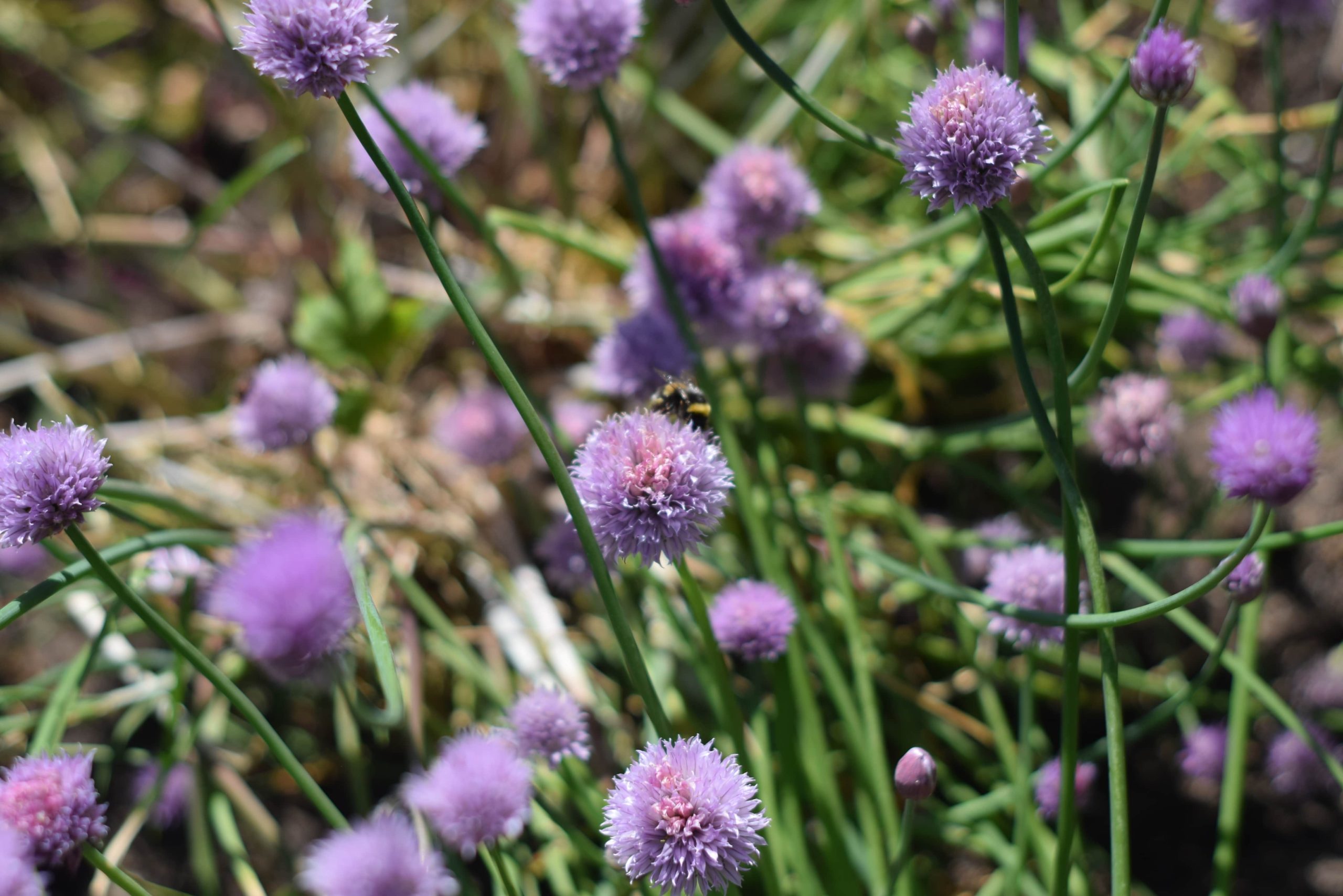
Caring for Your Herbs and Flowers
Growing healthy herbs and flowers requires proper care and maintenance. Here are some tips for keeping your plants healthy and strong:
Providing Good Air Circulation
Herbs and flowers need good air circulation to prevent disease and pests. Make sure to space your plants properly and avoid overcrowding. Prune back any overcrowded or damaged branches to improve airflow. Woody herbs like some varieties of lavender and thyme can be cut back quite dramatically when they get too big. As long as you leave some fresh, green parts on, it will grow back again in spring/ summer.
Maintaining Proper Moisture Content
Herbs and flowers require adequate moisture to grow and thrive, but too much or too little water can be harmful. Water your plants deeply, to encourage deep root growth. Consider using mulch to help retain moisture in the soil.
Following the Right Growing Season
Different herbs and flowers have different growing seasons. Some prefer cool weather, while others thrive in warmer temperatures. Make sure to choose plants that are well-suited to your climate, and plant them at the right time of year.
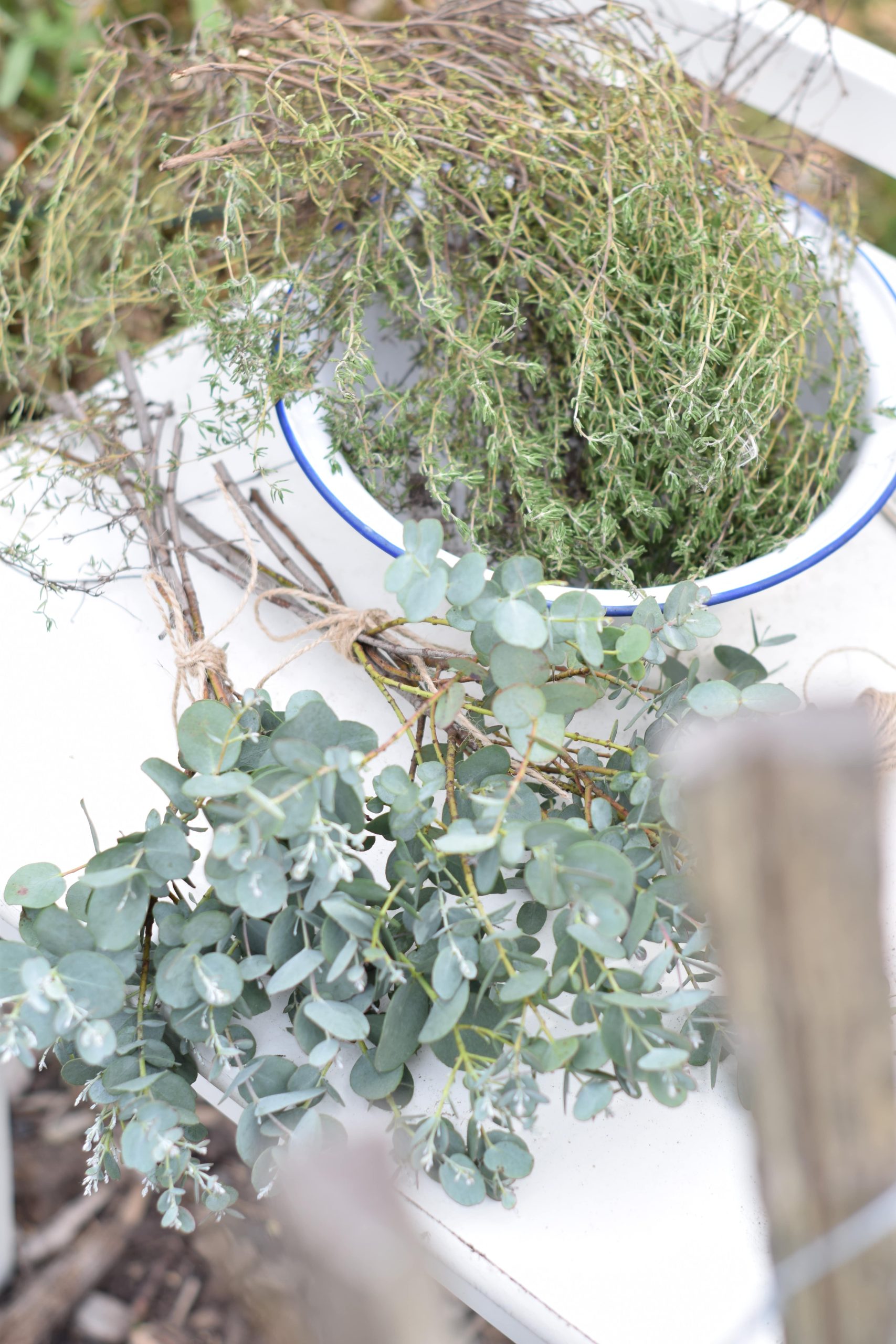
Watering, Fertilizing, and Pruning
Fertilize your plants with a balanced fertilizer once during the growing season. It’s better to keep adding organic matter like good compost or bonemeal. That will add nutrients to the soil as well. Prune your herbs and flowers regularly to encourage bushier growth and to remove any dead or damaged branches.
Harvesting at the Right Time
To get the best flavor and aroma from your herbs and flowers, it’s important to harvest them at the right time. Harvesting too early or too late can affect the quality of the final product. Generally, it’s best to harvest herbs in the morning after the dew has dried but before the sun gets too hot. Again, Flowers should be harvested in the morning after the dew has dried but before the heat of the day. Also, If you want to save seeds for next year, be sure to let some of those flower heads mature until they produce seeds.
When harvesting your herbs and flowers, it’s important to pay attention to the parts you’re using. For example, for culinary herbs like thyme and oregano, the leaves are the most commonly used part. For herbal teas, it’s often the flowers and leaves that are used. For preserving, flower buds or fresh leaves, like mint leaves, are often the best choice.
It’s also important to choose the right parts of the plant based on their maturity. For example, woody stems should be avoided, as they are more difficult to dry and don’t have a great flavor. Instead, focus on the smaller leaves and flower buds, which have the best flavor and aroma.
Once you’ve harvested your herbs and flowers, it’s time to dry them. Drying is the process of removing moisture from the plant material, which helps to preserve it for long-term use. There are several ways to dry herbs and flowers, including air-drying, oven-drying, and using a dehydrator.
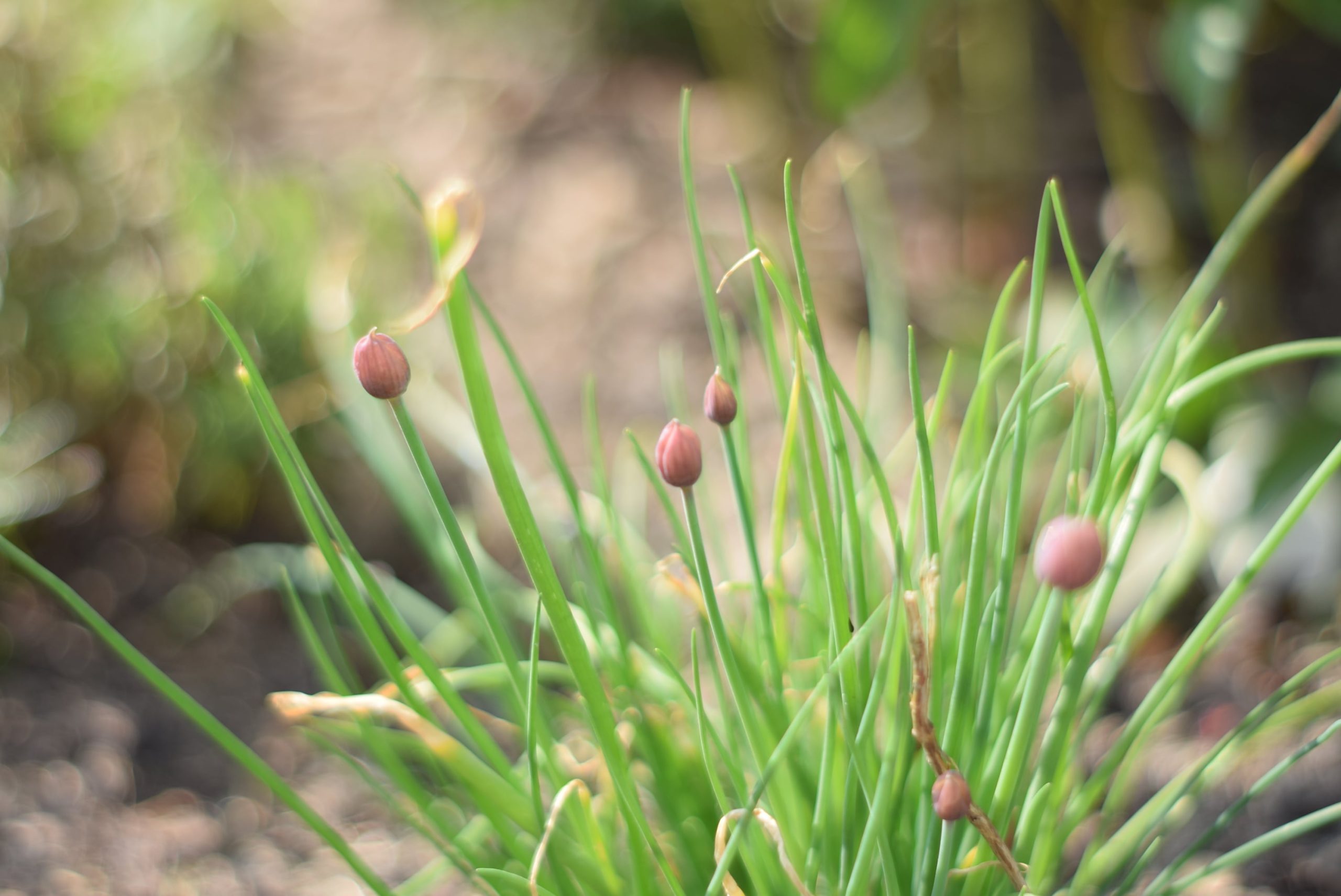
You might also like…
Click on the blog post titles below for more gardening tips and natural living ideas!
Air drying is the easiest and most traditional way to dry herbs and flowers. To air-dry your plants, simply tie them into small bunches and hang them upside down in a warm, dry place with good air circulation. This method works well for small bunches of herbs and flowers. I like to air-dry woody herbs like thyme and lavender. For those fresh, leafy greens like basil, I like to use the dehydrator.
If you need to dry larger quantities of herbs and flowers, you may want to consider using an oven or dehydrator. To oven-dry, your herbs and flowers, spread them out in a single layer on a baking sheet and place them in the oven at a low temperature (around 100-110 degrees Fahrenheit) until they are dry and crisp. To use a dehydrator, dry at a low temperature.
Once your herbs and flowers are dry, it’s important to store them properly to maintain their quality. Store your dried herbs and flowers in airtight containers in a cool, dry place away from direct sunlight. This will help to preserve their flavor, color, and aroma for future use.
In conclusion, growing and drying your herbs and flowers is a great way to add flavor and aroma to your culinary creations, as well as to preserve them for future use. With the right care and attention, you can harvest and dry your plants during the growing season to ensure the best flavor and aroma and store them properly for long-term use.
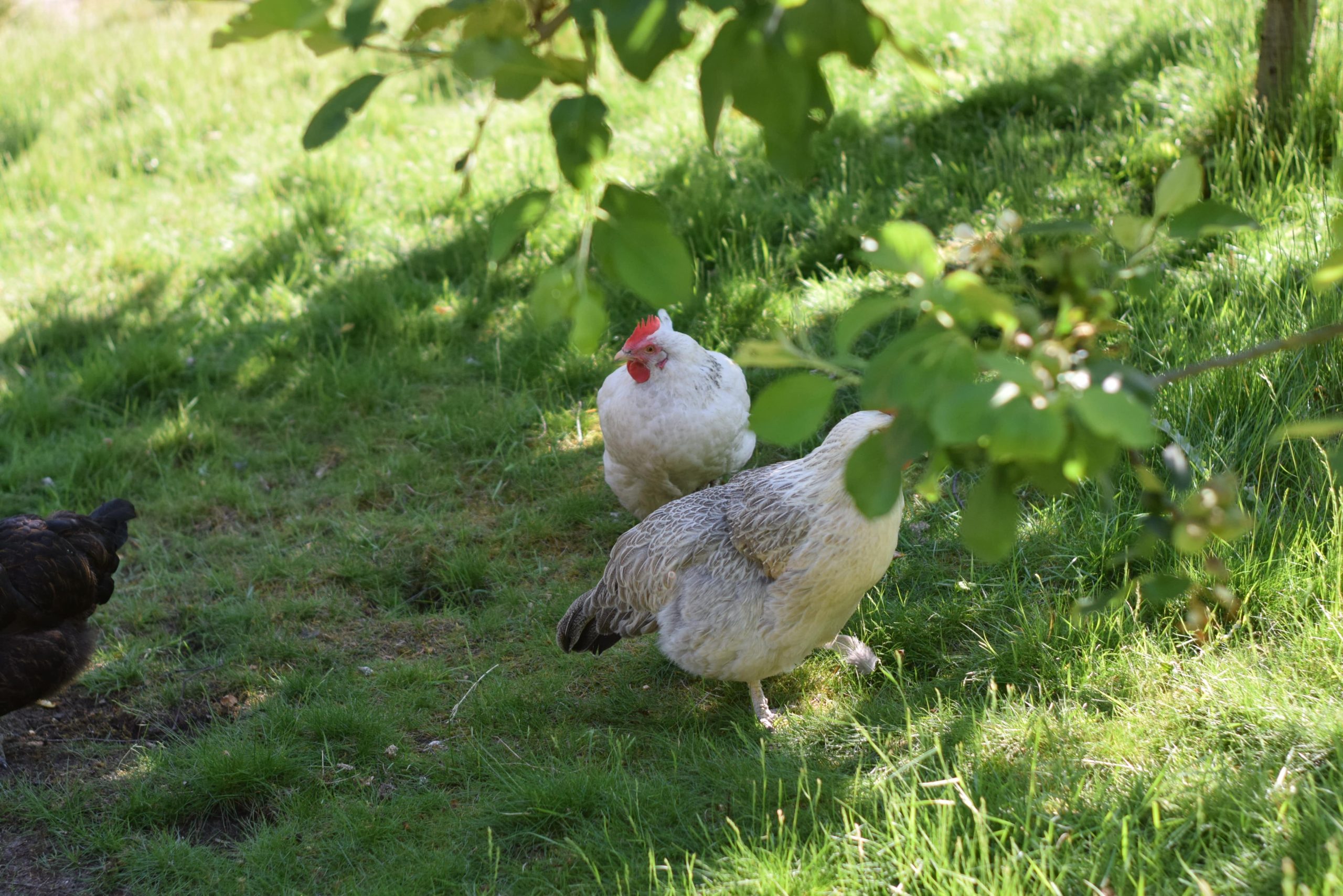
Cooking with Dried Herbs
Dried herbs are an essential ingredient in many recipes, providing flavor and aroma to dishes. In this section, we will discuss how dried herbs can be used in cooking. When you dry your own you know their origin and you can save lots of money by making your own spice mixes!
Culinary herbs, such as thyme, oregano, and rosemary, are popular choices for drying due to their robust flavor profiles. To incorporate dried herbs into your cooking, simply crush or crumble them before adding them to your dish. Keep in mind that dried herbs are more concentrated than fresh herbs, so a little goes a long way.
Here are some tips for using dried herbs in different types of dishes:
Soups and stews
Add dried herbs early in the cooking process to allow their flavors to meld with the broth. Common herbs for soups and stews include thyme, oregano, and bay leaves.
Marinades
Mix dried herbs with oil and acid (such as lemon juice or vinegar) for a flavorful marinade. Popular herbs for marinades include rosemary, thyme, and oregano.
Salad dressings
Mix dried herbs with oil, vinegar, and other seasonings for a flavorful salad dressing. Herbs such as basil, thyme, and oregano work well in dressings.
Roasted vegetables
Toss dried herbs with vegetables before roasting for added flavor. Try using rosemary, thyme, or oregano with root vegetables like potatoes or carrots.
Dried herbs can be easily found at your local grocery store or dried from your garden. To ensure the best quality, dry herbs when they are at their best.
By incorporating dried herbs into your cooking, you can elevate the flavor of your dishes and take advantage of their many (health) benefits. And save some money too! Besides all that, maybe the most rewarding thing is just being able to use what you’ve grown and know where it came from.
Making Herbal Tea and Infusions
Herbal tea and infusions are not only delicious and soothing, but they can also provide a variety of medicinal benefits. In this section, we will briefly discuss how to make herbal tea and infusions using dried herbs and flowers.
(Medicinal) herbs are a great choice for making herbal tea and infusions, as they can provide numerous health benefits. Some of the most popular medicinal herbs used in tea include chamomile, peppermint, lavender, and echinacea. Depending on the herbs you choose, you can create teas that aid in digestion, reduce stress, promote sleep, and boost your immune system.
To make herbal tea, simply place your dried herbs in a tea infuser or tea bag and steep in boiling water for 5-10 minutes. If you’re using fresh herbs, use 2-3 times as much as you would with dried herbs. Some herbs may require longer steeping times, so be sure to check the recommended steeping time for each herb.
For herbal infusions, which are a bit stronger than tea, use 1-2 tablespoons of dried herbs per cup of boiling water. Let the mixture steep for at least 20-30 minutes before straining out the herbs. You can also batch-make infusions using a slow cooker or a stove-top pot.
Here are some recipes for popular herbal teas and infusions:
Chamomile Tea
Steep 1-2 teaspoons of dried chamomile flowers in boiling water for 5-10 minutes. Add honey or lemon to taste.
Lavender Infusion
Place 1-2 tablespoons of dried lavender flowers in a cup of boiling water and let steep for 20-30 minutes. Strain and enjoy. This is also great as a lemonade base for hot summer days!
Peppermint Tea
Steep 1-2 teaspoons of dried peppermint leaves in boiling water for 5-10 minutes. Add honey or lemon to taste.
Echinacea Immune-Boosting Tea
Combine 1-2 teaspoons of dried echinacea leaves, 1 teaspoon of dried elderberries, and 1 teaspoon of dried ginger root in a tea infuser or tea bag. Steep in boiling water for 10-15 minutes.
Remember to properly store your dried herbs and flowers in a cool, dark place with low humidity for optimal long-term storage. Using your own dried herbs and flowers for teas and infusions can be a cost-effective and satisfying way to enjoy the benefits of medicinal herbs.
Let’s wrap this up…
By growing and drying your herbs and flowers, you can have a fresh supply of culinary and medicinal herbs throughout the year. Whether you have a small garden bed or a large plot, there’s a wide variety of herbs and flowers that you can grow, harvest, and dry. Perennial herbs such as lavender, thyme, and sage are easy to maintain and can provide year-round yields. Fresh herbs like basil and parsley can also be preserved by drying or freezing, allowing you to enjoy their flavors even during the winter months.
I would encourage you to start growing and drying your herbs and flowers and to experiment with new recipes and methods of preserving them. Try something new. Start small and expand as you grow and get to know more!
Are you ready to take your natural living and cooking to the next level? Try growing and drying your own herbs and flowers! Not only will you have a fresh supply of culinary and medicinal herbs at your fingertips, but you’ll also be able to preserve the bounty of your garden for long-term use.
Share your experiences or tips in the comments below and let’s continue growing and learning together!





